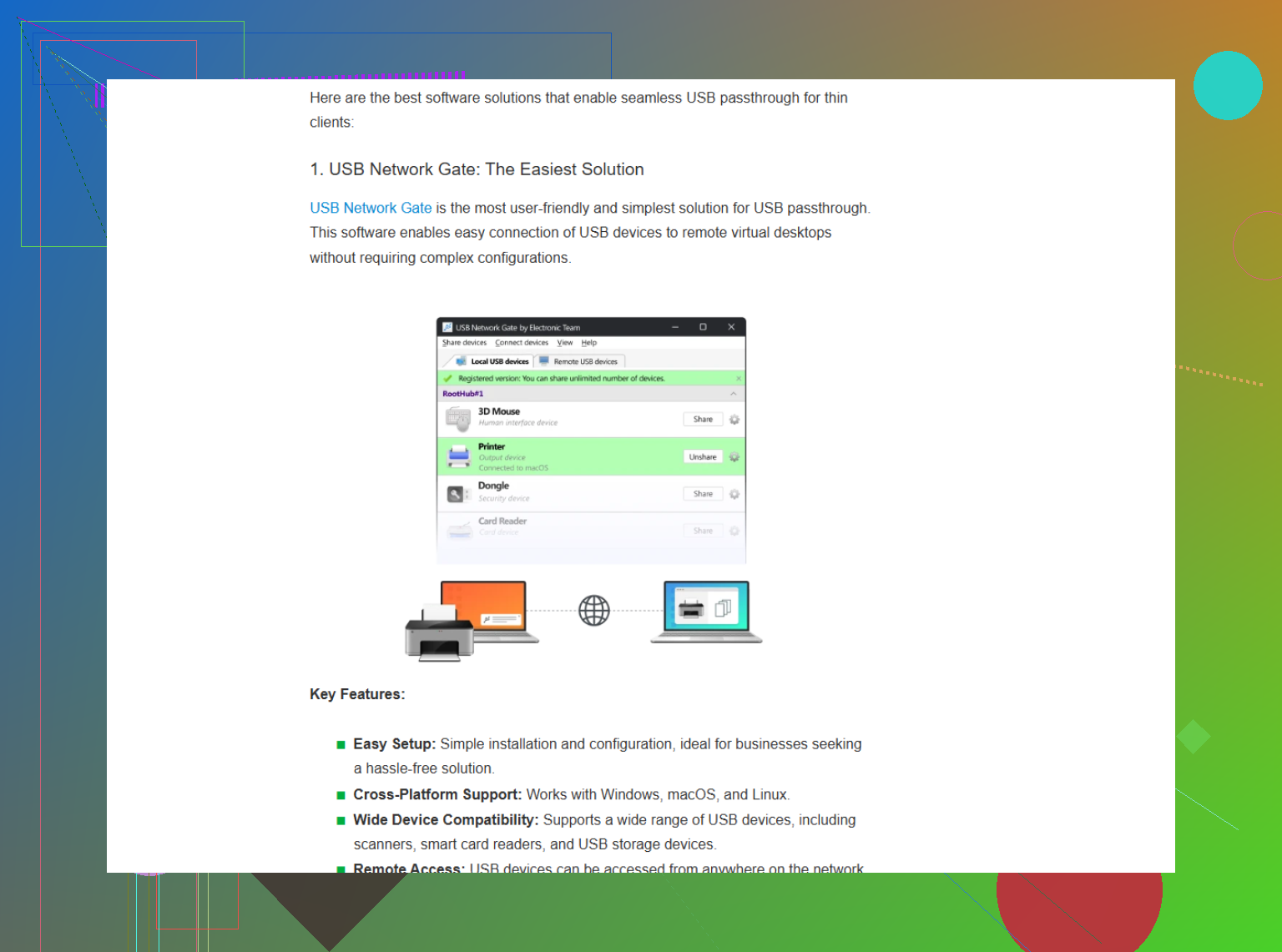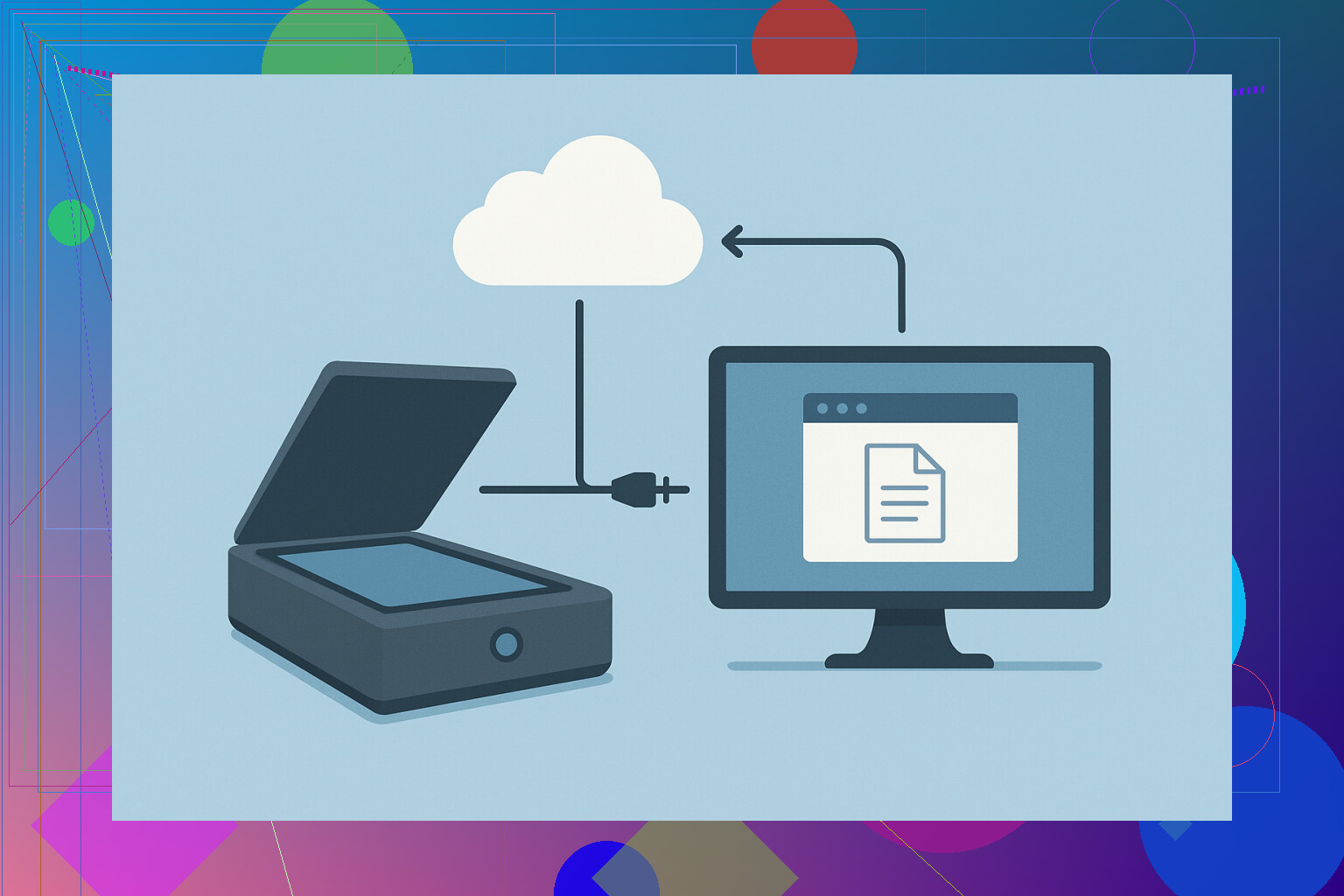Trying to figure out how to share a scanner with multiple computers on my network using ethernet. I’ve checked the manual, but it doesn’t really explain the steps or if it’s even possible with my setup. Has anyone done this before or know what I need to do? Would really appreciate some guidance so everyone in my office can use the same scanner easily.
USB Over Ethernet? The Struggle Is Too Real (But Here’s What Worked For Me)
Ever slammed headfirst into that USB-over-network problem where some ‘genius’ site promises everything… then hits you with the dreaded Windows-only sign and an invoice that’s basically highway robbery? Yeah, me too. I couldn’t believe we’re still fighting this nonsense in the 2020s.
My Deep Dive Into USB-Over-Ethernet (Aka “That Month I Lost to Google Results”)
Seriously, after hitting that brick wall—tried the usual suspects, most had ridiculous fees just to connect a few devices. And don’t get me started on “one license per port”—who even invented that?
So, out of pure necessity (and refusing to get fleeced again), I went full-on search mode. Dug up USB Network Gate—not exactly front-page Google, probably since their SEO guy fell asleep, but wow, finally something sane.
Breakdown For People Who Hate Complicated Software (Including Me)
- Installs straight-up on Windows, Linux, AND Mac. No “coming soon” shenanigans. (Yes, my home office is a weird zoo.)
- One license. Ten devices. No license-o-matic nonsense per USB stick or whatever.
- $159 upfront—not that “per month per port” stuff that spirals.
- Security? Got it covered: built-in encryption, reconnects if the network hiccups, and even lets you share USB over RDP without having to bolt on some janky extra software.
- It feels modern. Like, did someone actually update this in the last decade? Wild.
Quick Example From My Setup
I tossed the thing between my Windows workhorse, my slightly crusty Linux workstation, and a MacBook Air just for the challenge. Guess what? No drama, no cryptic error messages—just plugs and plays. I even hot-swapped a label printer while two OSes were fighting over it and… didn’t break a sweat.
Honestly? Here’s The Bottom Line
If you’re tired of those “only works on one OS” solutions and the price tags that look like they’re renting you a car, USB Network Gate might actually be worth your time. And no, before you ask, I don’t get paid for saying that—just happy not to be stuck in USB hell anymore.
Bonus round: If you get stuck sharing an old scanner across a network (ugh, those drivers… right?), I stumbled into a super clear walkthrough here: How I finally figured out how to share a USB scanner over Ethernet.
Not sure why Google insists on shoving the overpriced option down our throats, but hey, at least this one didn’t kill my wallet—or my sanity.
Scanning from multiple computers via Ethernet isn’t as plug-and-play as sharing a printer (which, ugh, WHY not??), but yeah—it can be done, just depends what hardware you’re rocking. So let’s get real:
First, if your scanner isn’t a fancy “network scanner” with an Ethernet port and built-in server features (sometimes called “Scan to Network” or “Scan to Folder”)—it’s just USB—out of the box, you can’t just slap it onto the switch and call it shared. The manual probably dodged this topic for a reason.
Your options basically break down into three camps:
-
Use a Network-Enabled Scanner (the easy lane). These are scanners with their own Ethernet jack—plug into network, install drivers everywhere, and boom you’re good. Pretty much zero fuss.
-
Plug Into Another Computer and Share (the “meh, but it works” method). Hook your scanner to a PC and use Windows “Scanner Sharing,” but honestly, this is a headache—half the time you’ll trip over permissions, OS quirks, or drivers not playing nice. And that host PC has to be awake 24/7. Which is dumb.
-
USB-over-Ethernet Solutions (the clever hack but $$$ sometimes). This is where @mikeappsreviewer’s suggestion comes in, and I agree—it’s smarter than rolling your own janky network share. USB Network Gate is actually solid as far as these things go, especially if you’re juggling Mac, Windows, and penguin-Linux boxes. There’s a one-time fee, which is better than getting bled dry by subscription models. If you’ve got more than one scanner or other oddball USB stuff to share, that solution is actually decent value. Real talk: I tried a bunch of “free” open-source USB-over-IP daemons (USBIP, etc.) and spent more hours cursing at kernel modules than was healthy. Unless you live to open terminal windows for fun, just…don’t.
If you’re still hunting for workarounds, there’s always buying a dedicated USB-over-Ethernet hardware device (like Silex or StarTech print servers)—they’re basically little network bridges for your scanner’s USB port. But they’re quirky (sometimes refuse to work with certain scanner models) and can get pricey for zero guarantees.
One last, slightly sketchy option: If you scanner supports it, use “Scan to Email” or “Scan to Cloud” features, then pull the images down wherever you want. Kinda backwards but technically that is sharing. Lol.
Bottom line: true “sharing a USB scanner via Ethernet” for general-purpose home/office is a pain and usually needs extra gear or software. If you want a step-by-step adventure (and don’t mind a side trip through driver drama), check out this extremely detailed guide on getting your USB scanner to work over your local network. Just don’t expect official support from most manufacturers—once you’re off the beaten path, you’re driving the bus.
For anyone searching: “How to share scanner over Ethernet,” you’ll want to weigh usability against cost and your pain tolerance for tech weirdness. If this sounds like too much work—honestly, sometimes it’s just easier to buy a network-enabled scanner and call it a day.
In all honestly, sharing a scanner over ethernet is the ultimate tech “should be easy, but isn’t” scenario. If you’re dealing with a straight-up USB-only scanner (not some network-enabled office beast), the options out there are, well… less than ideal—@mikeappsreviewer and @nachtschatten pretty much covered the “use a host PC” and “buy overpriced software/hardware” paths. I gotta weigh in with a healthy dose of skepticism on the idea that any USB-over-network tool will be 100% drama-free, though.
Here’s my two cents, having played this game with three different home office setups:
- The “connect to PC, remote in, and share” method? Absolute pain. Windows sharing works only when the moon is full and all the drivers are just right. Not fun, not reliable if the “host” ever sleeps or updates.
- “USB-over-Ethernet” (or as some call it, seamless USB device sharing across network) software is absolutely a step up, especially USB Network Gate since it runs cross-platform, not just Windows. But let’s not sugarcoat: You’ll pay for that reliability, and there’s always a chance your scanner model is the snowflake that just won’t play nice (so: check compatibility lists!).
- Hardware USB-to-Ethernet “server” boxes? Mixed bag. My StarTech experience ended with me rage-returning it after two days of fighting driver errors. If your scanner doesn’t appear in their supported list, don’t bother.
If you’ve already sunk a weekend into free tools like USBIP, congrats—your geek badge is on the way. But for everyone else who doesn’t like living in terminal windows, just… skip it. You’ll have more fun taking up knitting.
Contrarian take: sometimes, it’s actually cheaper and way less stressful to buy a cheap, used network-enabled AIO printer/scanner off FB Marketplace or Craigslist. Scan-to-email or cloud direct from device, done. USB-only scanners just weren’t meant for the network age, and fighting to change that is a hobby, not a solution.
Biggest tip: whatever road you try, keep expectations low and patience high. The “perfect” solution doesn’t exist for this; just try to minimize pain and find what breaks the least for you. Also, don’t trust any site that promises one-click sharing for free—if it sounds too good to be true, you’ll be stuck debugging driver hell. Riding the struggle bus is part of the deal.

